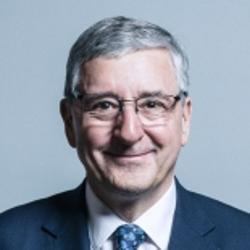Night Flying: Noise
(asked on 21st October 2015) - View SourceQuestion to the Department for Transport:
To ask the Secretary of State for Transport, what regulatory arrangements require airlines to use the quietest aircraft for early morning and late night flights into London's airports; and by what means are those arrangements enforced.
The Government sets night flight restrictions at the three busiest London airports; Heathrow, Gatwick and Stansted, which are designated for noise control purposes under the Civil Aviation Act 1982. As well as limiting the number of movements allowed within an airline season, these restrictions place requirements on the aircraft that can operate during the night period, and place seasonal limits on the amount of noise energy that can be emitted at each airport.
All aircraft are given a Quota Count (QC) number based on their noise during take-off and landing, with the noisier aircraft given a higher QC rating. QC/4 aircraft are not allowed to be scheduled during the night quota period (2330 to 0600), and the highest rated QC/8 and QC/16 aircraft are prevented from operating at all during the entire night period (2300 to 0700).
Each airport is given a seasonal noise quota, with aircraft with higher QC ratings using more of this quota per movement. The noise quota limit is designed to encourage the use of quieter aircraft by allowing airports to maximise the number of movements during any season through the use of aircraft with a lower quota count.
The Government regularly monitors the movement and noise quota usage at all three airports, including restrictions on the noisiest aircraft, to ensure compliance. It should be noted that these restrictions do not preclude noisier aircraft from using these airports in the case of emergencies or severe disruption, or with prior Government approval, such as for disaster relief flights.
The Government does not set night restrictions at any of London’s other international airports, but these operate their own restrictions, which are usually agreed as planning conditions:
- London Luton has a similar night noise regime to that in place at the designated airports. This limits the number of flights that can take place between and 2330 and 0600 and prohibits aircraft with a QC rating of greater than 2 from operating between 2300 and 0700.
- London City Airport does not operate flights between 2200 and 0630 from Sunday to Saturday morning, nor any flights between 1230 Saturday and 1230 Sunday.
- London Southend sets a limit of 120 night movements per month in the period 2300 to 0630 and, in addition, prohibits any scheduled movements by aircraft with a QC rating of greater than 1 or by helicopters.
Enforcement at these airports is a matter between airlines and the airport, or the local planning authority if relevant.
It should also be noted that airports are able to incentivise airlines to use their quietest aircraft during the night and early morning by charging higher landing fees for noisier planes at these times.

